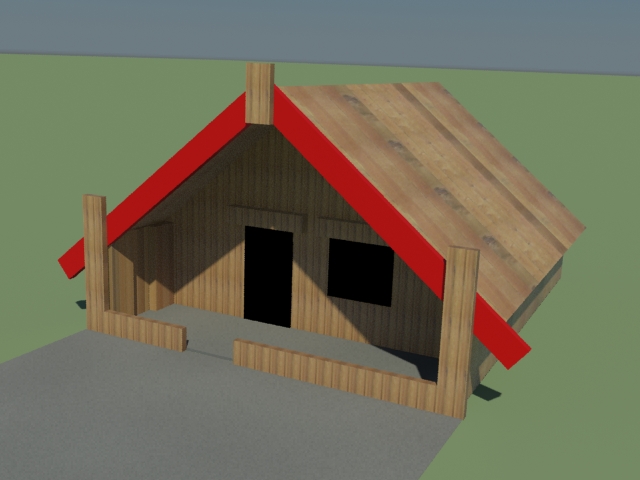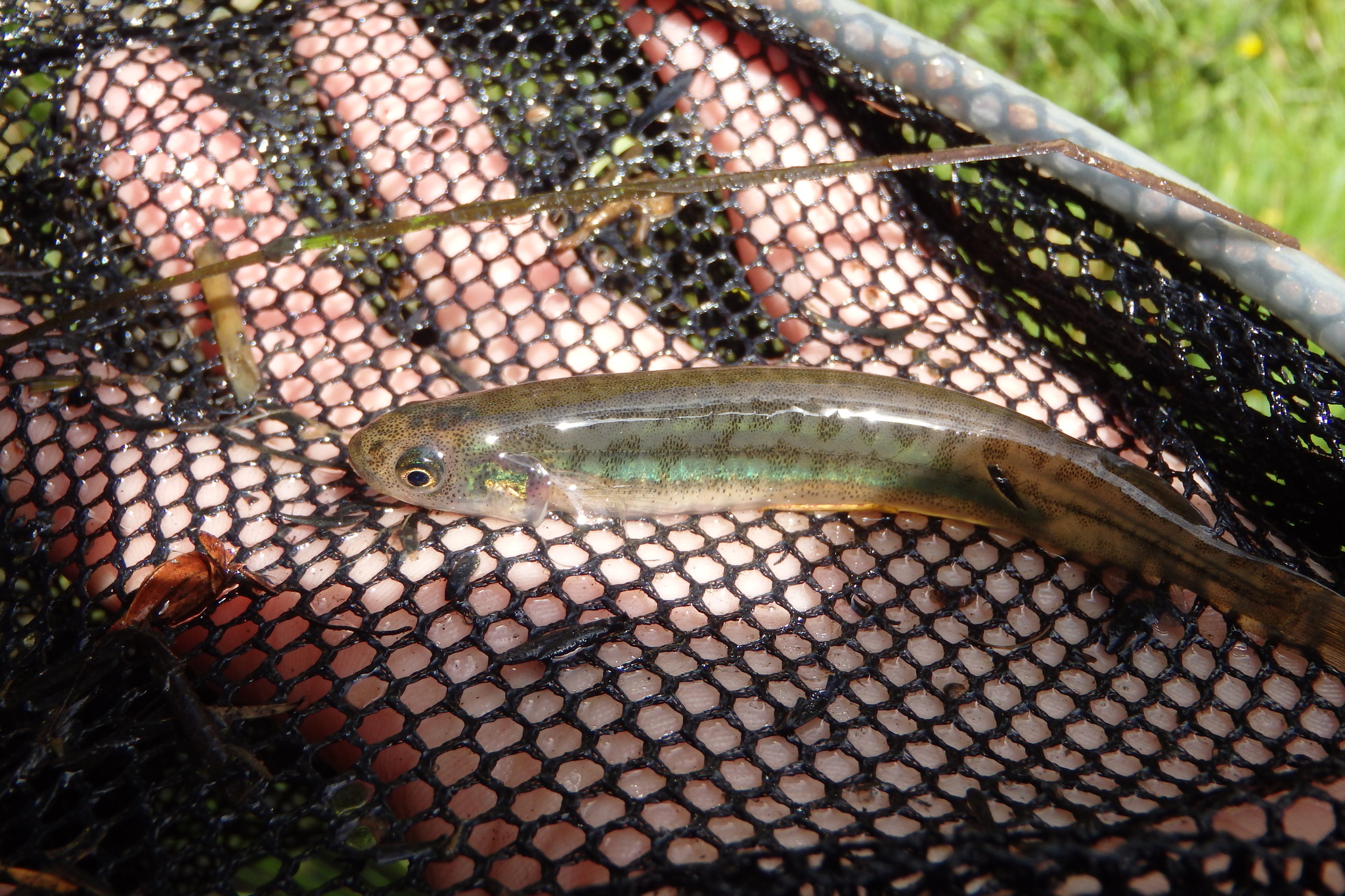|
Te Rangi-tua-mātotoru
Te Rangi-tua-mātotoru was an 18th-century Māori '' rangatira'' and tohunga of the Ngāti Te Rangiita hapū and '' ariki'' (paramount chieftain) of the Ngāti Tūwharetoa iwi of the region around Lake Taupō, New Zealand. He built three great wharenui (meeting houses) for different sections of Ngāti Tūwharetoa. When the Tūwharetoa chieftain Tutakaroa attacked Te Rangi-tua-mātotoru’s allies in Ngāti Tahu, he summoned allies from Te Arawa to attack Tutakaroa at Whakaohokau, but had second thoughts about the venture and arranged a peace before Te Arawa could wreak havoc. He sent a force to help Te Uamairangi from the Ngāti Te Upokoiri ''hapū'' of Ngāti Kahungunu escape to Whakatane after he was defeated in a bid for control of Ngāti Kahungunu. In his old age, he negotiated the peace which ended the Tūhoe-Ngāti Tūwharetoa War. After his death, he was eventually succeeded by Herea Te Heuheu Tukino I. He played an important role in Ngāti Tūwharetoa as the mod ... [...More Info...] [...Related Items...] OR: [Wikipedia] [Google] [Baidu] |
Ariki
An ariki (New Zealand, Cook Islands), ꞌariki (Easter Island), aliki (Tokelau, Tuvalu), ali‘i (Samoa, Hawai‘i), ari'i (Society Islands, Tahiti), aiki or hakaiki (Marquesas Islands), akariki (Gambier Islands) or ‘eiki (Tonga) is or was a member of a hereditary chiefly or noble rank in Polynesia. New Zealand Political leadership or governance in Māori society has traditionally come from two overlapping groups of people – the ariki and the rangatira. The ariki are the "persons of the highest rank and seniority". As the "high-ranking first-born children of first-born children", ariki inherit their positions from their forebears. In particular, their "supreme rank omesfrom the conjunction of a number of senior descent lines from founding ancestors, and ultimately from the gods". In Māori culture ariki were men or women. A modern example of a woman in this leadership role is Te Atairangikaahu the paramount head or Māori Queen of the Waikato federation of tribes.See also: Ba ... [...More Info...] [...Related Items...] OR: [Wikipedia] [Google] [Baidu] |
Ngāti Tahu
Iwi () are the largest social units in New Zealand Māori society. In Māori roughly means "people" or "nation", and is often translated as "tribe", or "a confederation of tribes". The word is both singular and plural in the Māori language, and is typically pluralised as such in English. groups trace their ancestry to the original Polynesian migrants who, according to tradition, arrived from Hawaiki. Some cluster into larger groupings that are based on (genealogical tradition) and known as (literally "canoes", with reference to the original migration voyages). These super-groupings generally serve symbolic rather than practical functions. In pre-European times, most Māori were allied to relatively small groups in the form of ("sub-tribes") and ("family"). Each contains a number of ; among the of the Ngāti Whātua iwi, for example, are Te Uri-o-Hau, Te Roroa, Te Taoū, and Ngāti Whātua-o-Ōrākei. Māori use the word ''rohe'' to describe the territory or boundaries ... [...More Info...] [...Related Items...] OR: [Wikipedia] [Google] [Baidu] |
Maihi
A wharenui (; literally "large house") is a communal house of the Māori people of New Zealand, generally situated as the focal point of a ''marae''. Wharenui are usually called meeting houses in New Zealand English, or simply called ''whare'' (a more generic term simply referring to a house or building). Also called a ''whare rūnanga'' ("meeting house") or ''whare whakairo'' (literally "carved house"), the present style of wharenui originated in the early to middle nineteenth century. The houses are often carved inside and out with stylized images of the iwi's (or tribe's) ancestors, with the style used for the carvings varying from tribe to tribe. Modern meeting houses are built to regular building standards. Photographs of recent ancestors may be used as well as carvings. The houses always have names, sometimes the name of a famous ancestor or sometimes a figure from Māori mythology. Some meeting houses are built at places that are not the location of a tribe, but where many ... [...More Info...] [...Related Items...] OR: [Wikipedia] [Google] [Baidu] |
Motutere, New Zealand
Motutere is a small township on the southeastern shore of Lake Taupō in New Zealand's Waikato region.Dowling, P. (ed.) (2004). ’’Reed New Zealand atlas’’. Auckland: Reed Publishing. It lies on Motutere Bay, close to the popular diving location, Te Poporo / Bulli Point, and approximately halfway between Taupō and Tūrangi, to both of which it is connected by SH1. In the 18th century, the township was the base of Te Rangi-tua-matotoru, the paramount chief of Ngāti Tūwharetoa. Motutere is dominated by a camping site, one of the main spots for caravan camping along the shores of the lake. A popular short walking track, Waipehi Walk, begins at the settlement and offers views across the lake. " |
Tūwharetoa I Te Aupōuri
Tūwharetoa i te Aupōuri, also called Tūwharetoa-waekae-rakau, was a Māori people, Māori ''ariki'' (chieftain) in the Bay of Plenty, New Zealand and the eponymous ancestor of the Ngāti Tūwharetoa iwi, who probably lived in the sixteenth century. During his life, he established control over a large section of the Bay of Plenty. In his old age, his children and grandchildren Ngāti Tūwharetoa invasion of Taupō, invaded Taupō, which became the centre of the iwi's rohe. Life Tūwharetoa was the son of Mawake-Taupō and Ha-ahuru. Through his father, he descended from Te Arawa, Mataatua, and ultimately from Ngātoro-i-rangi, who arrived in New Zealand on the ''Arawa (canoe), Arawa'' canoe, and the atua, Rongomai, Rongomai-nui. Through his mother, he was descended from Hapuonone, a tribe that had been settled at Ōhiwa before the arrival of ''Arawa'', and from Mataatua. This ancestry gave him great Mana (Oceanian mythology), mana and a strong claim to the land. On account of th ... [...More Info...] [...Related Items...] OR: [Wikipedia] [Google] [Baidu] |
Tamamutu
Tamamutu was a 17th-century Māori people, Māori ''ariki'' (chieftain) of the Ngāti Te Rangiita hapū and the paramount chief of the Ngāti Tūwharetoa iwi of the region around Lake Taupō, New Zealand. He was based at Motutere, New Zealand, Motutere, but was an active warrior, leading campaigns against the Whanganui Māori of the Manganuioteao River valley to the southwest, against Te Arawa on the shores of Lake Rotorua to the north, and against Ngati Kahungunu in Hawke’s Bay. He was also a talented orator, who is the source of several ''whakatauki'' (Māori proverbs) and forged a lasting peace between Ngāti Tūwharetoa and Te Arawa. On his death, he was succeeded as paramount chief of Ngāti Tūwharetoa by his son Kapawa. Life Tamamutu was the oldest son of Te Rangi-ita (Ngāti Tūwharetoa), Te Rangi-ita and Waitapu. Through his father, Te Rangi-ita, he was a descendant of Tūwharetoa i te Aupōuri. His mother was the daughter of Te Ata-inutai of Ngāti Raukawa, through who ... [...More Info...] [...Related Items...] OR: [Wikipedia] [Google] [Baidu] |
Lake Rotoiti (Bay Of Plenty)
Lake Rotoiti is a lake in the Bay of Plenty region of New Zealand. It is the northwesternmost in a chain of lakes formed within the Okataina Caldera. The lake is close to the northern shore of its more famous neighbour, Lake Rotorua, and is connected to it via the Ohau Channel. It drains to the Kaituna River, which flows into the Bay of Plenty near Maketu. The full name of the lake is Te Rotoiti-kite-a-Īhenga, which in the Māori language means "The Small Lake Discovered By Īhenga", the Māori people, Māori explorer also credited with discovering Lake Rotorua. Legend says that the lake was named as such because when Ihenga first saw it, he was only able to see a small part of it and thought the lake was a lot smaller. Since the 1960s, the quality of lake water has been negatively affected by inflows of nitrogen rich water from Lake Rotorua, agricultural run-off from surrounding farms and seepage from domestic septic tanks. The effects of this included an almost permanent alga ... [...More Info...] [...Related Items...] OR: [Wikipedia] [Google] [Baidu] |
Waitangi Tribunal
The Waitangi Tribunal (Māori: ''Te Rōpū Whakamana i te Tiriti o Waitangi'') is a New Zealand permanent commission of inquiry established under the Treaty of Waitangi Act 1975. It is charged with investigating and making recommendations on claims brought by Māori relating to actions or omissions of the Crown, in the period largely since 1840, that breach the promises made in the Treaty of Waitangi. The Tribunal is not a court of law; therefore, the Tribunal's recommendations and findings are not binding on the Crown. They are sometimes not acted on, for instance in the foreshore and seabed dispute. The inquiry process contributes to the resolution of Treaty claims and to the reconciliation of outstanding issues between Māori and Pākehā. In 2014, the Tribunal found that Ngāpuhi rangatira did not give up their sovereignty when they signed the Treaty of Waitangi in 1840. History In 1975, protests from indigenous peoples about unresolved Treaty of Waitangi grievances had bee ... [...More Info...] [...Related Items...] OR: [Wikipedia] [Google] [Baidu] |
Mana (Oceanian Mythology)
In Melanesian and Polynesian cultures, ''mana'' is a supernatural force that permeates the universe. Anyone or anything can have ''mana''. They believed it to be a cultivation or possession of energy and power, rather than being a source of power. It is an intentional force. ''Mana'' has been discussed mostly in relation to cultures of Polynesia, but also of Melanesia, notably the Solomon Islands and Vanuatu. In the 19th century, scholars compared ''mana'' to similar concepts such as the '' orenda'' of the Iroquois Indians and theorized that ''mana'' was a universal phenomenon that explained the origin of religions. Etymology The reconstructed Proto-Oceanic word *mana is thought to have referred to "powerful forces of nature such as thunder and storm winds" rather than supernatural power. As the Oceanic-speaking peoples spread eastward, the word started to refer instead to unseen supernatural powers. Polynesian culture ''Mana'' is a foundation of Polynesian theo ... [...More Info...] [...Related Items...] OR: [Wikipedia] [Google] [Baidu] |




.jpg)